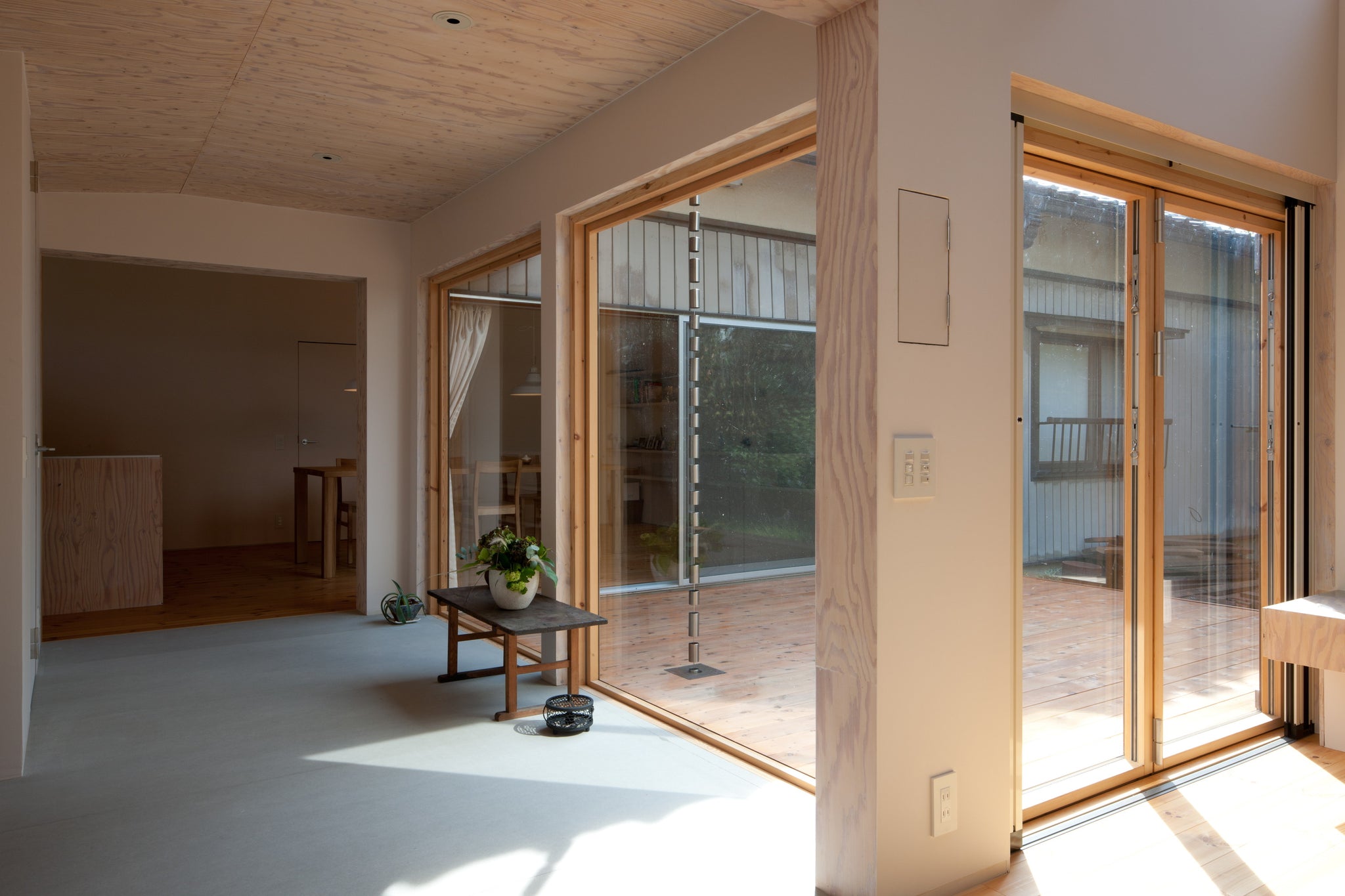Where should rainwater chains be installed to maximize their advantages?
Where should rainwater chains be installed to maximize their advantages?
The following is an overview of the favorable situations and locations for rain chain installation, while listing the advantages and disadvantages of rain chains.

Photographer: Syoichi Uchiyama
In contrast to a conventional downspout, a rain chain showcases exceptional design, providing an opportunity to admire rainfall as a design feature without energy consumption, such as electricity. Originating in Japan, a country surrounded by the sea on all sides and experiencing substantial precipitation, the concept of the rainwater chain was first conceived. The archipelago’s distinct climatic characteristics, coupled with its unique architectural style and culture, contributed to the emergence of the rainwater chain.
While a rain chain offers advantages not found in a conventional downspout, it also comes with its own set of disadvantages.
First, let's discuss the advantages.
You will enjoy watching the water gracefully cascade and flow.
This is the essence of a rain chain's uniqueness. After all, its most significant attribute lies in the ability to behold rainwater in motion. Humans, by nature, are drawn to the mesmerizing movement of water—whether in waterfalls, streams, or fountains—perhaps due to the calming sound and rhythm it offers.
As a user of rain chain in my own home, I often find myself gazing blankly at them on rainy days.
From indoors, I can also gauge the intensity of rainfall by simply observing the force of water flowing into the rain chain.
Streamline the pathway for water to reach the ground by utilizing less complex routes, especially beneficial for eaves extended further out.
In Japan, where wooden structures have been integral to architecture since ancient times and rainfall is common, temples, shrines, castles, and other significant buildings featured notably deep eaves. This design aimed to minimize exposure to rain and prevent moisture-related deterioration.
Nevertheless, extending the eaves can result in the eave gutter moving farther from the building walls, complicating the path to the downspout typically installed along the building's perimeter and leading to an unappealing appearance. In such scenarios, a rain chain, which elegantly permits rainwater to cascade directly from the eave gutter, can effectively capitalize on its features.
It enhances the overall ambiance with a distinct Japanese essence.
In various scenarios, there are both advantages and drawbacks, yet few functional building ornaments besides rain chains can truly capture that Japanese ambiance. The water's unpredictable flow and its visual transformations in response to weather changes offer unique benefits. Despite its metal composition, the rain chain retains an organic essence, gently swaying in the wind, contributing to its allure. Due to this characteristic, an increasing number of hotels catering to foreign guests visiting Japan have incorporated the rain chain in recent years. We interpret this as a deliberate move by architectural designers to foster an enjoyable experience for visitors, encouraging them to embrace the essence of Japan.
Furthermore, certain rainwater chains we produce feature simple shapes designed with the concept of pristine water flow, resulting in a less pronounced Japanese aesthetic compared to other designs.
These are the potential benefits, yet we will also delve into the drawbacks.
Less drainage capacity than standard downspouts
Because of the rain chain's design, where water is gathered gradually in a chain before descending, it's not conducive to rapidly directing large volumes of water to the ground at once. If there's a need for significant water flow, installing a pipe downspout alongside the rain chain or implementing an emergency drainage route from another location can address sudden, heavy rainfall effectively.
Depending on the volume of rainwater and the intensity of the wind, water may splash onto the surrounding area.
Water splashing may occur from the connecting parts of the chain and areas where water flow is visible, depending on the circumstances. Splashing tends to escalate on windy days or during heavy rainfall. Therefore, we advise installing rain chains in areas where scattering is not a significant concern. The distance rainwater scatters is influenced by the intensity of rain and wind, typically reaching a radius of approximately 0.5 meters.
The cost is higher compared to a standard downspout.
Compared to a rain chain, which consists of many different parts, a pipe gutter has fewer parts and is less expensive to install because it is made of a single pipe extending toward the ground.
Cleaning and other maintenance will necessitate more frequent attention.
Since the opening through which rainwater passes is smaller than that of a pipe downspout (the diameter of our products is approximately 20 to 35 mm), fallen leaves and other debris tend to accumulate and require more frequent cleaning.
It is advisable to avoid installation in areas prone to accumulating large amounts of fallen leaves and debris, as this will increase the maintenance frequency.
Considering the aforementioned advantages and disadvantages collectively, the circumstances and suitable installation locations can be summarized as follows:
To fully capitalize on the visual appeal of rain chains, it's best to install them in highly visible areas where rainwater flow is readily observable.
- Rain chains offer simplicity in locations where installing a downspout would pose challenges.
- While they do not need to match the same drainage capacity as pipes, rainwater chains can be used in places where moderate rainwater flows, and where leaves and other debris do not accumulate easily.
In summary, I have outlined the merits and drawbacks of rain chains. As rain chains possess distinct characteristics, there are both suitable and unsuitable locations for their installation. Specifically, the situations mentioned above are particularly favorable, so please consider this information as a reference when contemplating the installation of rain chains.










